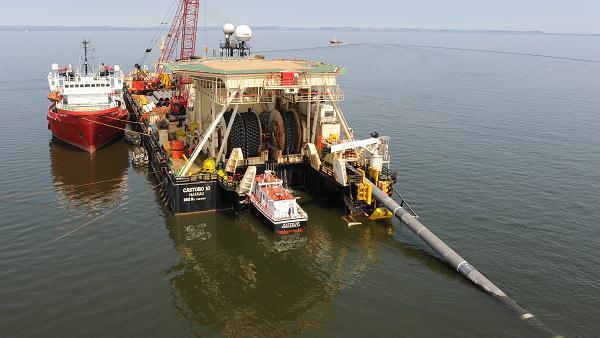
STRETCHED NORD STREAM

European Union leaders are headed for a major showdown at their summit in Brussels starting Thursday. On the one side, Germany, which, along with Russia, is one of the main proponents of the proposed Nord Stream II underwater gas pipeline. On the other, the EU's Central and Eastern European members, led most recently and most vocally by Italy's Prime Minister Matteo Renzi. It's a dispute that will likely escalate all the way to the European Court of Justice. It's a fight Europe needs to have.
The Nord Stream II pipeline would stretch 1,200 kilometers across the Baltic Sea, from Vyborg on the Russian coast to Griefswald, Germany. Once completed, it would have the capacity to transport 27.5 billion cubic meters of gas directly to Germany, circumventing Ukraine and the Central and Eastern European states. Russia's Gazprom would own 50% of the project, and France's Engie, Austria's OMV, Royal Dutch Shell, and Germany's BASF and E.ON each would own a 10% share.
The EU's Central and Eastern European member states fear with good reason that such a pipeline would undermine the security of their energy supplies, which depends on their role as transit countries to Western Europe. As long as Russia needs their transit routes to access the lucrative Western European market, they are unlikely to have their energy supplies cut off.
Nord Stream II is intended to circumvent these states, shipping Russian gas directly to Germany. Central and Eastern European countries then would have to depend on Russia's willingness to continue selling them gas through existing pipelines. The alternative would be to buy Russian gas from Germany after the gas had passed through Nord Stream II—provided Russia sold enough surplus gas to Germany, and that Germany was willing to supply those countries over possible Russian objections.
Such dependence upon Russia and Germany isn't an attractive prospect to most Central and Eastern European capitals. During the past two years, Ukraine has received "reverse flows" of Russian gas from Germany and the Central and Eastern European states. On a number of occasions, Gazprom has sought to cut off the flows of natural gas to those EU member states that were supplying Ukraine. The clear concern now is that if Ukraine could be targeted this way, so could countries such as Poland, Slovakia and Hungary that Nord Stream II would bypass. The confidence of these countries in Germany's goodwill is also undermined by Berlin's support for Nord Stream II.
So several member states, including Poland, Estonia, Slovakia and Italy, will protest the project at Thursday's summit meeting. The overarching political concern is that the pipeline would give Russia more leverage over its former satellites and could undermine EU resolve on sanctions imposed on the Kremlin due to the conflict in Ukraine. But their real opportunity to oppose Nord Stream II lies in the EU's energy-liberalization rules.
Approximately 100 kilometers of the Nord Stream II pipeline would lie in the territorial sea of Germany and Denmark. As such, the first hurdle facing Gazprom and its allies would be in obtaining certification under Article 11 of the European Union's 2009 Gas Directive, which requires that pipelines controlled by a non-EU entity not threaten domestic or EU supply security. Given the concerns of several EU members, this already poses grave problems for the project.
Even if it obtains Article 11 certification, Gazprom, to use the full capacity of Nord Stream II, would also need an exemption from another clause of the Gas Directive, which would otherwise require it to provide third-party access to its capacity. But this exemption is only granted if the pipeline provides new supply or enhances competition. Current pipeline capacity is underused and Nord Stream II is only envisaged to switch routes, diverting supply from Ukraine, so this condition clearly is not met. And by giving Gazprom greater direct access to the Western European market, it increases Gazprom's market power and reduces competition.
The main counterargument made by Germany when faced with EU law objections to Nordstream 2 has been to say that the Gas Directive does not apply to undersea pipelines. This argument does not stand any close examination. In all EU law the presumption is that the law applies to the territory of all EU states including the territorial sea. That presumption would have to be overturned by express wording in the directive. In addition, this would mean that all member states with seaboards could potentially escape the application of EU law. Under the German interpretation, the U.K. would be able to escape the application of EU energy law entirely by putting their pipelines in the waters round its shores.
Given the fears of many EU member states over the impact Nord Stream II would have on their supply security, they are likely to insist on a rigorous application of EU rules. Any states not satisfied with the results would seek redress in the EU's courtrooms, from the EU General Court all the way up to the European Court of Justice. Judicial delays such as these could pose a dire threat to the project, a prospect that might encourage member states to maximize all possible routes for legal review.
-----
More:





